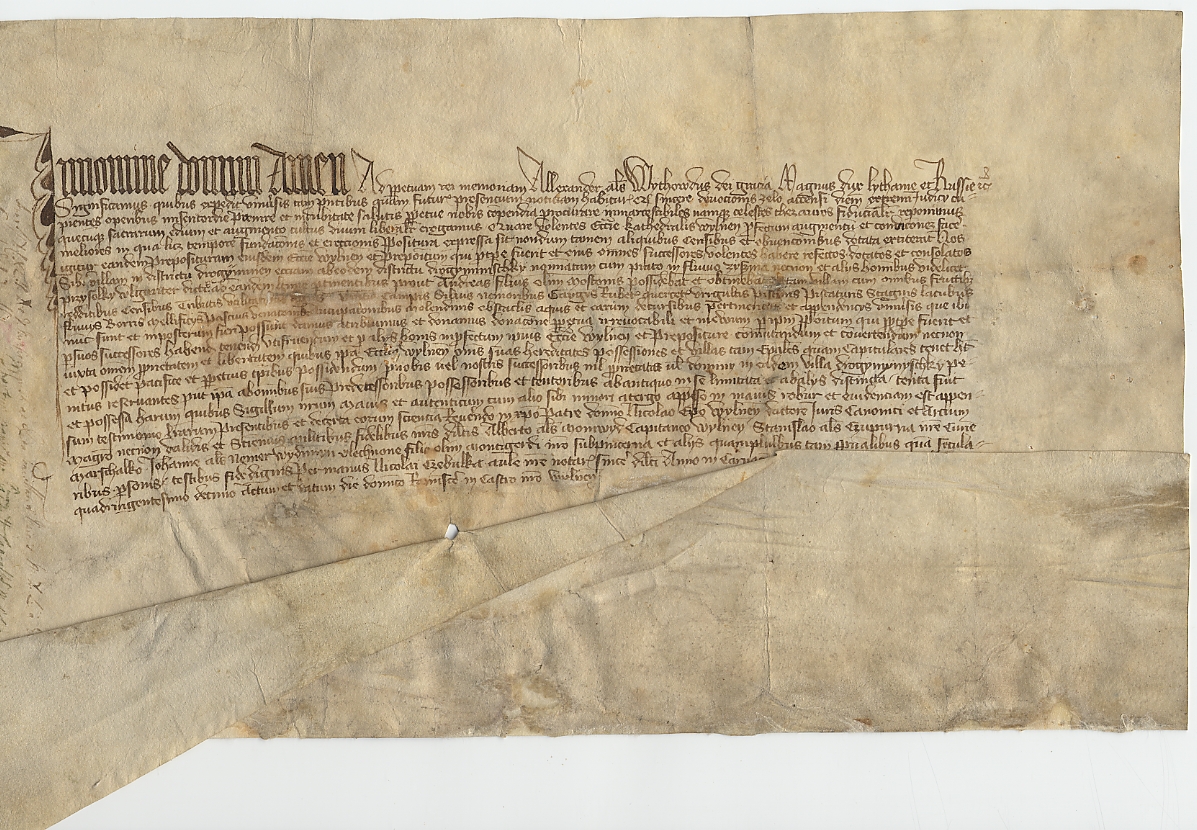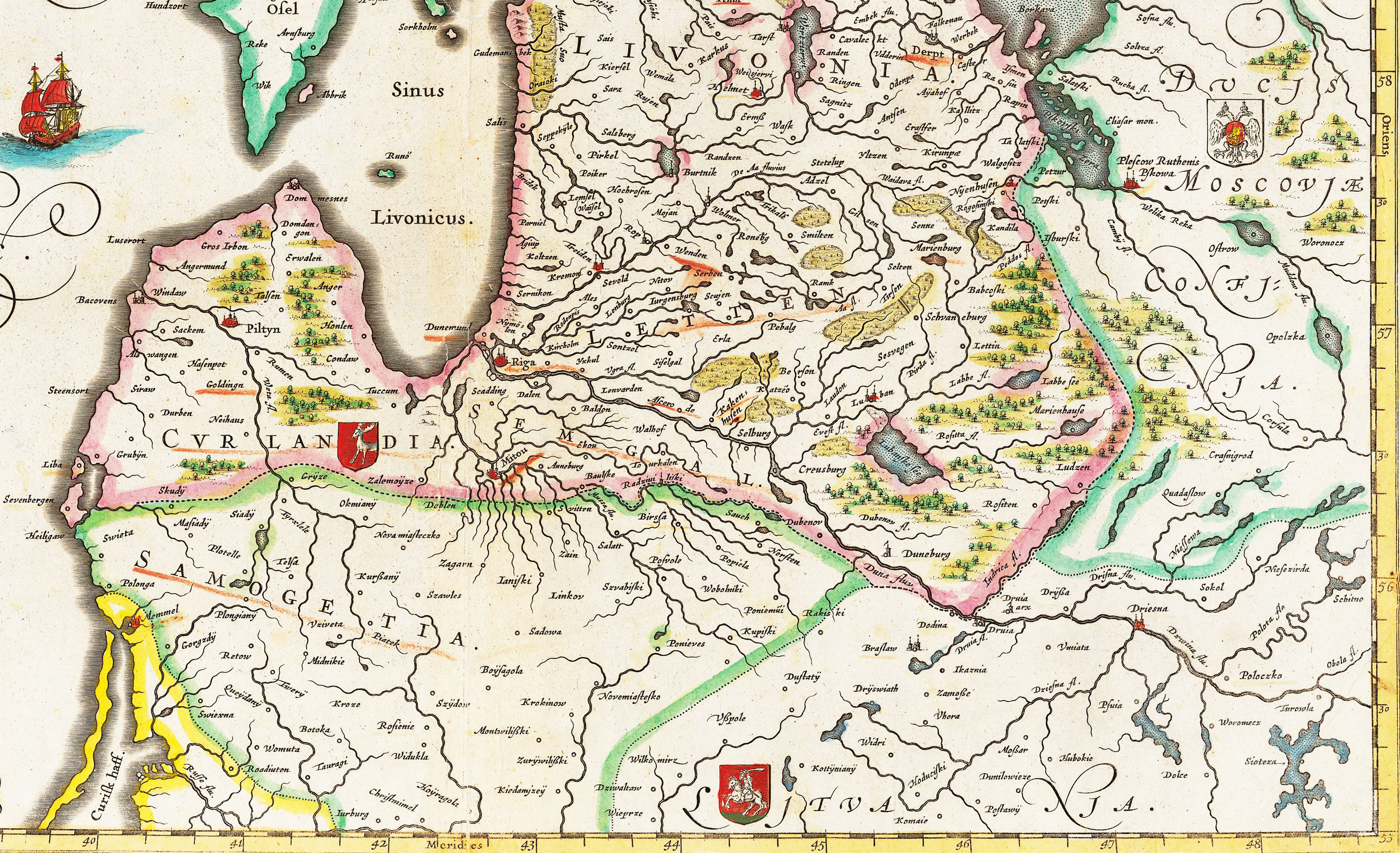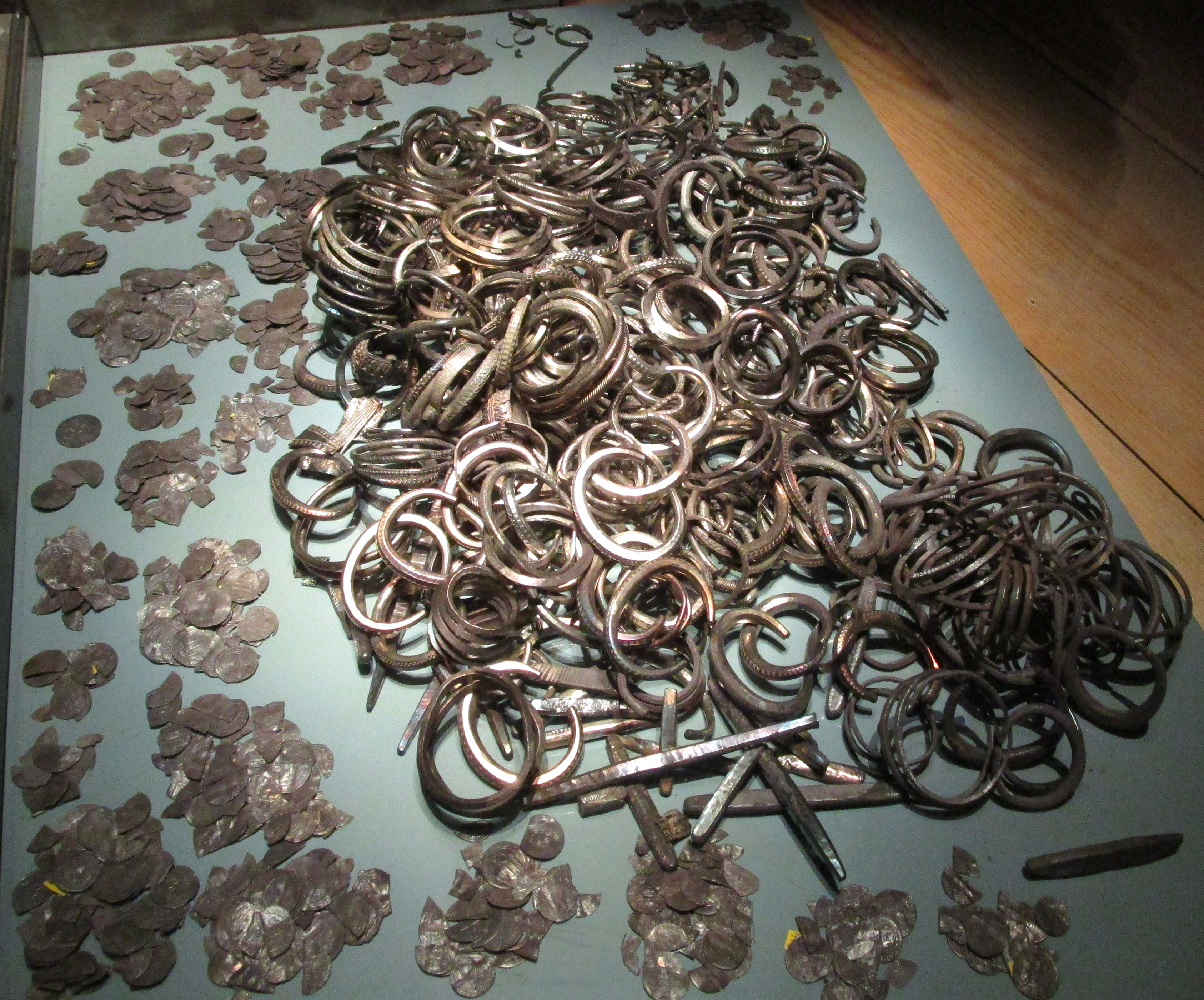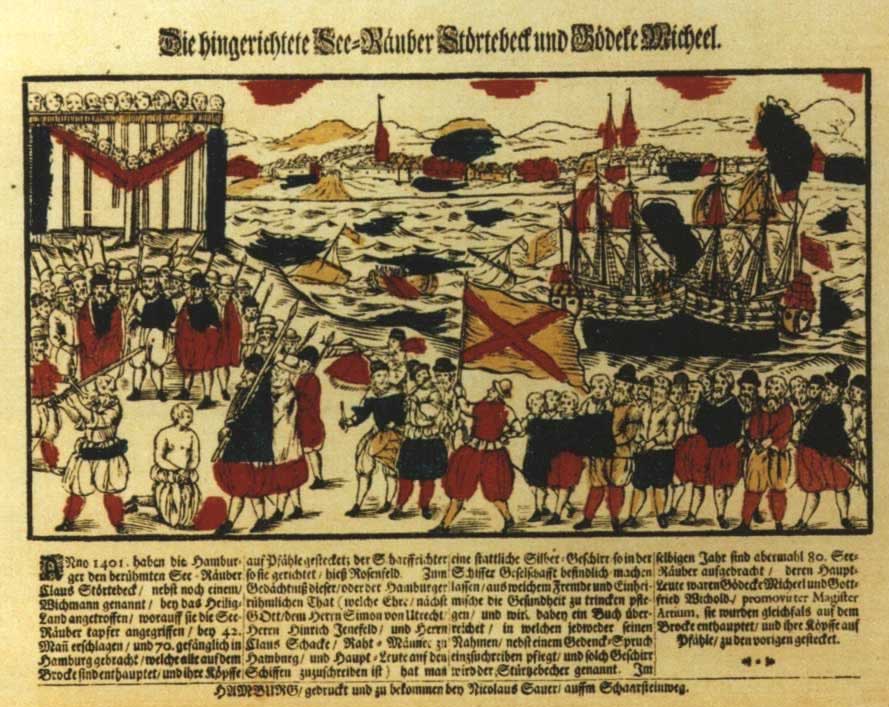|
Ulrich Von Jungingen
Ulrich von Jungingen (1360 – 15 July 1410) was the 26th Grand Master of the Teutonic Knights, serving from 1407 to 1410. His policy of confrontation with the Grand Duchy of Lithuania and the Kingdom of Poland would spark the Polish–Lithuanian–Teutonic War and lead to disaster for his Order, and his own death, at the Battle of Grunwald. Life A scion of the Swabian noble house of Jungingen, he was probably born at Hohenfels Castle near Stockach, as the ancestral seat at Jungingen had been devastated in 1311. Ulrich and his elder brother Konrad von Jungingen, as younger sons excluded from succession, took the vow of the Teutonic Knights and moved to the Order's State in Prussia. Ulrich resided in Schlochau (Człuchów) and was Komtur of Balga (1396–1404). His career profited from the patronage of his elder brother Konrad, who was elected Grand Master in 1393. After the Knights had expelled the Victual Brothers from Gotland in 1398, Ulrich distinguished himself ... [...More Info...] [...Related Items...] OR: [Wikipedia] [Google] [Baidu] |
Grand Master (order)
Grand Master (; ; ; ; ) is a title of the supreme head of various orders, including chivalric orders such as military orders and dynastic orders of knighthood. The title also occurs in modern civil fraternal orders such as the Freemasons, the Odd Fellows, and various other fraternities. Additionally, numerous modern self-styled orders attempt to imitate habits of the former bodies. History Medieval era In medieval military orders such as the Knights Templar or the Livonian Brothers of the Sword, the Grand Master was the formal and executive head of a military and feudal hierarchy, which can be considered a "state within the state", especially in the crusader context ''sensu lato'', notably aimed at the Holy Land or pagan territories in Eastern Europe, as well as the reconquista in the Iberian Peninsula. If an order is granted statehood and thus widely considered sovereign, the Grand Master is also its Head of State. If within the Holy Roman Empire, a Reichsfürst an ... [...More Info...] [...Related Items...] OR: [Wikipedia] [Google] [Baidu] |
Stockach
Stockach () is a town in the district of Konstanz, in southern Baden-Württemberg, Germany. Location It is situated in the Hegau region, about 5 km northwest of Lake Constance, 13 km north of Radolfzell and 25 km northwest of Konstanz. Stockach includes the central city and 10 villages: History The Counts of Nellenburg founded Stockach in the 13th century, the town receiving town privileges in 1283. In 1401 to the Landgraviate of Nellenburg owned the towns of Engen, Tengen, Radolfzell, Stockach, 125 villages, 9 abbeys and 4 mailing stations. The Counts of Nellenburg became extinct in 1422 and their estates were acquired by the House of Habsburg in 1465; hence Stockach was a part of Further Austria until 1805. In the Swabian War of 1499 the troops of the Three Leagues besieged the town but failed to capture it. During the War of the Spanish Succession, Elector Maximilian II Emanuel of Bavaria set fire to Stockach. During the French Revolutionary Wars ... [...More Info...] [...Related Items...] OR: [Wikipedia] [Google] [Baidu] |
Vytautas The Great
Vytautas the Great (; 27 October 1430) was a ruler of the Grand Duchy of Lithuania. He was also the prince of Grodno (1370–1382), prince of Lutsk (1387–1389), and the postulated king of the Hussites. In modern Lithuania, Vytautas is revered as a national hero and was an important figure in the national rebirth in the 19th century. ''Vytautas'' is a popular male given name in Lithuania. In commemoration of the 500-year anniversary of his death, Vytautas Magnus University was named after him. Monuments in his honour were built in many towns in independent Lithuania during the interwar period from 1918 to 1939. Vytautas knew and spoke the Lithuanian language with his cousin Jogaila. Struggle for power 1377–1384 Vytautas' uncle Algirdas had been Grand Duke of Lithuania until his death in 1377. Algirdas and Vytautas' father Kęstutis had ruled jointly in the form of diarchy, with Algirdas governing the east and Kęstutis the west, primarily responsible for defense again ... [...More Info...] [...Related Items...] OR: [Wikipedia] [Google] [Baidu] |
Samogitian Uprisings
Samogitian uprisings refer to two uprisings by the Samogitians against the Teutonic Knights in 1401–1404 and 1409. Samogitia was granted to the Teutonic Knights by Vytautas the Great, Grand Duke of Lithuania, several times in order to enlist Knights' support for his other military affairs. The local population resisted Teutonic rule and asked Vytautas to protect them. The first uprising was unsuccessful and Vytautas had to reconfirm his previous promises to transfer Samogitia in the Peace of Raciąż. The second uprising provoked the Knights to declare war on Poland. Hostilities escalated and resulted in the Battle of Grunwald (1410), one of the biggest battles of medieval Europe. The Knights were soundly defeated by the joint Polish–Lithuanian forces, but Vytautas and Jogaila, King of Poland, were unable to capitalize on their victory. Conflicts regarding Samogitia, both diplomatic and military, dragged until the Treaty of Melno (1422). Background Samogitia as an object of ... [...More Info...] [...Related Items...] OR: [Wikipedia] [Google] [Baidu] |
Königsberg
Königsberg (; ; ; ; ; ; , ) is the historic Germany, German and Prussian name of the city now called Kaliningrad, Russia. The city was founded in 1255 on the site of the small Old Prussians, Old Prussian settlement ''Twangste'' by the Teutonic Knights during the Northern Crusades, Baltic Crusades. It was named in honour of King Ottokar II of Bohemia, who led a campaign against the pagan Old Prussians, a Baltic tribe. A Baltic Sea, Baltic port city, it successively became the capital of the State of the Teutonic Order, the Duchy of Prussia and the provinces of East Prussia and Province of Prussia, Prussia. Königsberg remained the coronation city of the Prussian monarchy from 1701 onwards, though the capital was Berlin. From the thirteenth to the twentieth centuries on, the inhabitants spoke predominantly German language, German, although the city also had a profound influence upon the Lithuanian and Polish cultures. It was a publishing center of Lutheranism, Lutheran literatu ... [...More Info...] [...Related Items...] OR: [Wikipedia] [Google] [Baidu] |
Duchy Of Samogitia
The Duchy of Samogitia (, , ) was an administrative unit of the Grand Duchy of Lithuania from 1422 (and from 1569, a member country of the Polish–Lithuanian Commonwealth). Between 1422 and 1441 it was known as the Eldership of Samogitia. Since the 1540s the Grand Duke of Lithuania also held the title of Duke of Samogitia, although the actual ruler of the province, responsible to the Grand Duke, was known as the General Elder () of Samogitia who was self-elected by the Samogitian nobility. The Duchy was located in the western part of the present Republic of Lithuania. Historically, in the west it had access to the Baltic Sea; in the north, it bordered the Duchy of Courland and Ducal Prussia in the south. During the Middle Ages and until the last partition in 1795, Samogitia had clearly defined borders as the Duchy of Samogitia. Afterwards the area encompassed the Samogitian Diocese. Today Samogitia is one of several ethnographic regions and is not defined administra ... [...More Info...] [...Related Items...] OR: [Wikipedia] [Google] [Baidu] |
Treaty Of Salynas
The Treaty of Salynas (, ) was a peace treaty signed on 12 October 1398 by Vytautas the Great, the Grand Duke of Lithuania, and Konrad von Jungingen, the Grand Master of the Teutonic Knights. It was signed on an islet of the Neman River, probably between Kulautuva and the mouth of the Nevėžis River. It was the third time, after the Treaty of Königsberg (1384) and Treaty of Lyck (1390), that Vytautas promised Samogitia to the Knights. The territory was important to the Knights as it physically separated the Teutonic Knights in Prussia from its branch in Livonia. It was the first time that the Knights and Vytautas attempted to enforce the cession of Samogitia. However, it did not solve the territorial disputes over Samogitia and they dragged on until the Treaty of Melno in 1422. Background When Jogaila, the Grand Duke of Lithuania, married Jadwiga of Poland and was crowned as King of Poland in 1386, he appointed his unpopular brother Skirgaila as viceroy for Lithuania. V ... [...More Info...] [...Related Items...] OR: [Wikipedia] [Google] [Baidu] |
Margaret I Of Denmark
Margaret I (; March 1353 – 28 October 1412) was Queen regnant of Denmark, Norway, and Sweden (which included Finland) from the late 1380s until her death, and the founder of the Kalmar Union that joined the Scandinavian kingdoms together for over a century. She had been queen consort of Norway from 1363 to 1380 and of Sweden from 1363 to 1364 by marriage to Haakon VI. Margaret was known as a wise, energetic and capable leader, who governed with "farsighted tact and caution", earning the nickname " Semiramis of the North". Also known famously and derisively as "King Breechless", one of several derogatory nicknames once thought to have been invented by her rival Albert, King of Sweden, she was also called "Lady King" by her subjects, widely used in recognition of her capabilities. Knut Gjerset calls her "the first great ruling queen in European history". The youngest daughter of Valdemar IV of Denmark, Margaret was born at Søborg Castle. She was a practical, patient admin ... [...More Info...] [...Related Items...] OR: [Wikipedia] [Google] [Baidu] |
Gotland
Gotland (; ; ''Gutland'' in Gutnish), also historically spelled Gottland or Gothland (), is Sweden's largest island. It is also a Provinces of Sweden, province/Counties of Sweden, county (Swedish län), Municipalities of Sweden, municipality, and List of dioceses, deaneries and parishes of the Church of Sweden, diocese. The province includes the islands of Fårö and Gotska Sandön to the north, as well as the Karlsö Islands (Lilla Karlsö, Lilla and Stora Karlsö, Stora) to the west. The population is 61,023 (2024) of which about 23,600 live in Visby, the main town. Outside Visby, there are minor settlements and a mainly rural population. The island of Gotland and the other areas of the province of Gotland make up less than one percent of Sweden's total land area. The county formed by the archipelago is the second smallest by area and is the least populated in Sweden. In spite of the small size due to its narrow width, the driving distance between the furthermost points of the ... [...More Info...] [...Related Items...] OR: [Wikipedia] [Google] [Baidu] |
Victual Brothers
The Victual Brothers () were a loosely organized guild of privateers who later turned to piracy. They affected maritime history, maritime trade during the 14th century in both the North Sea, North and Baltic Sea, Baltic Seas. They were initially hired in 1392 by the Dukes of Duchy of Mecklenburg, Mecklenburg to support their fight against Margaret I of Denmark, Queen Margaret I of Denmark, who was besieging Stockholm. Named after the Latin word ('provisions'), their mission was to supply the city with goods. They initially had the support of most of the Hanseatic League, Hanseatic league apart from Lübeck. Over time, they became notorious pirates, attacking coastal towns around the Baltic region, so that the maritime trade in the Baltic Sea virtually collapsed. At the peak of their power in 1394, they took over the island of Gotland. Their influence in the Baltic region declined after the Teutonic Order drove them out of Gotland in 1398. After being expelled, the remaining Vict ... [...More Info...] [...Related Items...] OR: [Wikipedia] [Google] [Baidu] |
Balga
Balga (; ; ; ) was a medieval castle of the Teutonic Knights in Kaliningrad Oblast, Russia. The castle ruins are located on the shore of the Vistula Lagoon, north of Mamonovo in the Pogranichny municipality of Bagrationovsky District, about southwest of Kaliningrad. History The hill of Balga had been the site of an Old Prussian ( Warmian) fortress called Honeda. The fort had been unsuccessfully besieged by the Wettin margrave Henry III of Meissen on his 1237 Prussian Crusade, but was eventually conquered in 1239 by the forces of the Teutonic Order, led by Grand Marshal Dietrich von Bernheim. Balga was the oldest Ordensburg constructed by the Teutonic Order in the region of present-day Kaliningrad Oblast, and was built from 1239 to control naval traffic on the Vistula Lagoon. With the assistance of Duke Otto I of Brunswick-Lüneburg, the Teutonic Knights defeated the Old Prussians along the coastline of Warmia and Natangia. The subjugation of these pagan peoples led Duke � ... [...More Info...] [...Related Items...] OR: [Wikipedia] [Google] [Baidu] |






